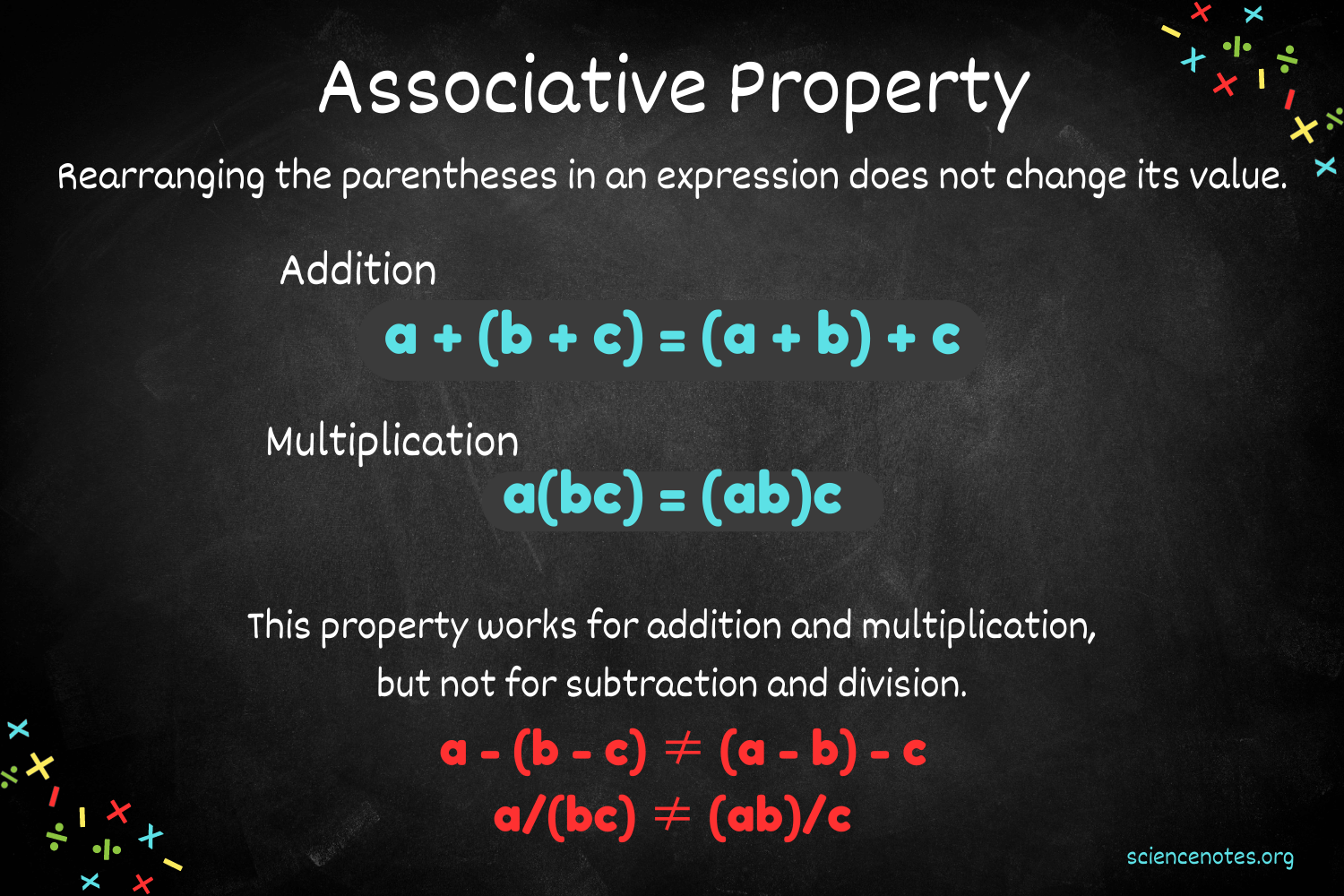Simple Math Properties Explained

The world of mathematics is built upon a foundation of simple yet powerful properties that govern how numbers interact with each other. Understanding these properties is crucial for grasping more complex mathematical concepts and for solving a wide range of problems in mathematics, science, and everyday life. Among these fundamental properties are the commutative, associative, distributive, and identity properties, which apply to both addition and multiplication.
Commutative Property
The commutative property states that the order of the numbers being added or multiplied does not change the result. For addition, this property can be expressed as: [a + b = b + a] For multiplication, it is: [a \times b = b \times a] This property is easily observable in everyday life. For instance, if you have 3 apples and your friend has 2 apples, together you have 5 apples, regardless of whose apples are counted first. Similarly, arranging 3 groups of 2 items each will yield the same total number of items (6) as arranging 2 groups of 3 items each.
Associative Property
The associative property deals with how numbers are grouped when more than two numbers are involved in an operation. For addition, this property is represented as: [(a + b) + c = a + (b + c)] And for multiplication: [(a \times b) \times c = a \times (b \times c)] This means that when you add or multiply any three numbers, the way you group them (as long as the order of the numbers stays the same) will not affect the final result. This property is essential for simplifying expressions and solving equations.
Distributive Property
The distributive property shows how multiplication interacts with addition. It can be expressed as: [a \times (b + c) = a \times b + a \times c] This property allows us to distribute a single multiplication over two or more additions, which is incredibly useful for simplifying algebraic expressions and solving equations. For example, in the expression (2 \times (3 + 4)), using the distributive property, we can calculate it as (2 \times 3 + 2 \times 4 = 6 + 8 = 14), which is the same as calculating (2 \times 7 = 14) directly.
Identity Property
The identity property involves a special number that, when used in an operation, does not change the value of the other number. For addition, the identity number is 0, because: [a + 0 = a] For multiplication, the identity number is 1, since: [a \times 1 = a] This property highlights the unique roles of 0 and 1 in mathematics. The additive identity (0) and the multiplicative identity (1) are foundational concepts that help in understanding more advanced mathematical operations and concepts.
Real-World Applications
These simple math properties are not just theoretical constructs; they have numerous practical applications. For instance, in cooking, following a recipe involves understanding quantities and how they combine under different operations, adhering to these properties. In finance, calculating interest, investments, and profits involves multiplication and addition, where these properties are essential for accurate computations. Even in programming, understanding how operations are performed and how numbers are manipulated is crucial for writing efficient algorithms and codes.
Conclusion
The commutative, associative, distributive, and identity properties form the backbone of arithmetic operations. They are foundational principles that help in simplifying expressions, solving equations, and understanding more complex mathematical concepts. By grasping these properties, individuals can develop a deeper appreciation for the logic and beauty of mathematics, enhancing their ability to solve problems and understand the world around them.
What is the significance of the commutative property in everyday life?
+The commutative property is significant because it allows for flexibility in how we perform calculations, especially in scenarios where the order of elements does not affect the outcome, such as combining quantities of items.
How does the distributive property aid in algebraic manipulations?
+The distributive property is crucial for expanding and simplifying algebraic expressions, making it easier to solve equations and manipulate variables, which is fundamental in algebra and beyond.
What are some practical ways the identity properties are used?
+The identity properties, particularly the additive identity (0) and the multiplicative identity (1), are used in scenarios requiring a baseline or neutral element, such as in resetting counters or initializing variables in programming, and in financial calculations where a base value needs to be maintained or compared against.
